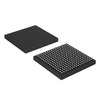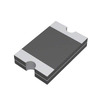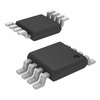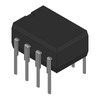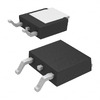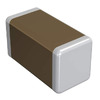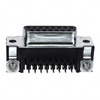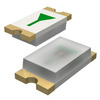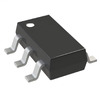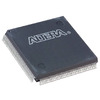1k Ohm Resistor
Resistors are basic components in electronics that control the flow of electrical current in devices. The 1k ohm resistor is good for balancing and stabilizing electronic circuits. This article explore the role of the 1k resistor, explaining how it works, why its color coding is important for identifying it and ensuring accuracy and the wide range of uses it has. It also discusses the different kinds of 1k ohm resistors and compares resistors with 4-color and 5-color bands. These color bands help meet specific needs for precision and are suited for different uses. This review highlights the resistors in designing electronics and discusses the technical and practical factors that affect choosing the right type of resistor for engineering projects.Catalog
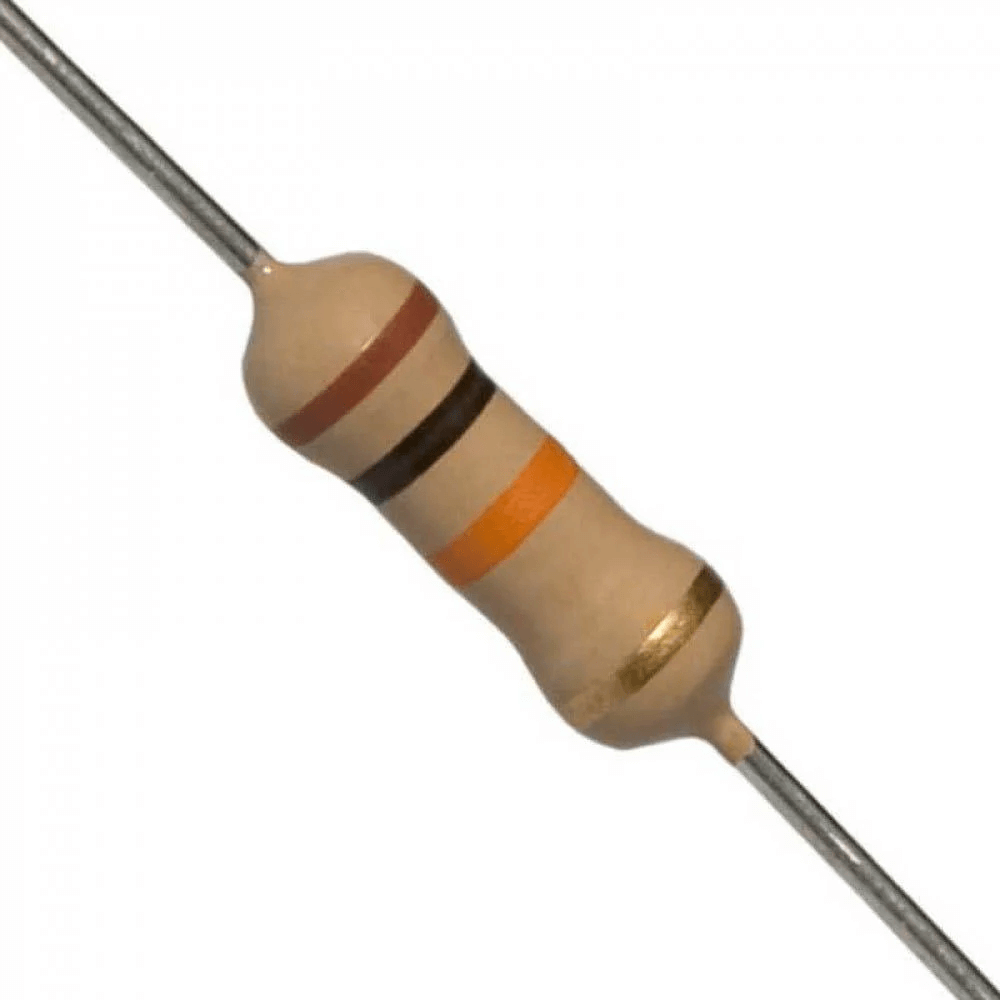
Figure 1: 1k Resistor
What Is a 1k Resistor?
Resistors regulate the current or voltage in different parts of a circuit to maintain stability and protect sensitive components from potential damage. A 1k resistor, meaning it has a resistance value of 1,000 ohms, is often used in situations where moderate resistance is required to keep the current within safe and efficient levels.

Figure 2: 1k Resistor
The '1k' label comes from combining the number 1 with the prefix 'kilo-', meaning 1,000. This tells us that a 1k resistor provides 1,000 ohms of resistance that is a good choice for circuits where very high or very low current is not ideal. By offering a balanced level of resistance, the 1k resistor plays a main role in circuits, helping with tasks like timing and signal conditioning.
The 1k Resistor Color Code

Figure 3: 1k Resistor Color Code
So how to read resistor color code? Let's find out the answer.
• First two bands (brown and black): Represent the first two digits of the resistance.
Brown = 1
Black = 0
Forming the number '10'.
• Third band (red): Acts as the multiplier.
Red indicates a factor of 100.
Multiply '10' by 100 to get 1,000 ohms (1k ohms).
• Last band (gold): Represents tolerance.
Gold indicates a tolerance of ±5%.
Actual resistance can vary between 950 and 1,050 ohms.
Applications of 1k Resistor
The 1k resistor is used in many different ways in electronic circuits, from simple tasks like limiting current or dividing voltage to more advanced applications in complex systems. In audio equipment, for example, 1k resistors are excellent in power amplifiers, where they work with capacitors or inductors to adjust the phase of the signal. This helps maintain clear, high-quality sound by ensuring the output remains stable and free from distortion.
1k resistors are also used in push-pull amplifier circuits as emitter loads. This improves the performance of transistors, making the entire circuit more efficient and reliable. They also play a major role in overcurrent protection circuits. When too much current flows through, the 1k resistor is designed to burn out first, sacrificing itself to protect more useful and expensive components. This ability to act as a protective barrier is good for reducing damage to sensitive parts of a circuit, ultimately lowering repair costs and preventing longer downtimes in electronic systems.
Types of 1k Ohm Resistors
1k Ohm resistors come in different types, each made for specific uses based on how they perform and what they’re used for.
Carbon Film Resistors are versatile and commonly used in everyday electronics. They strike a good balance between cost and performance. They have moderate noise and decent stability, making them reliable for general circuits.
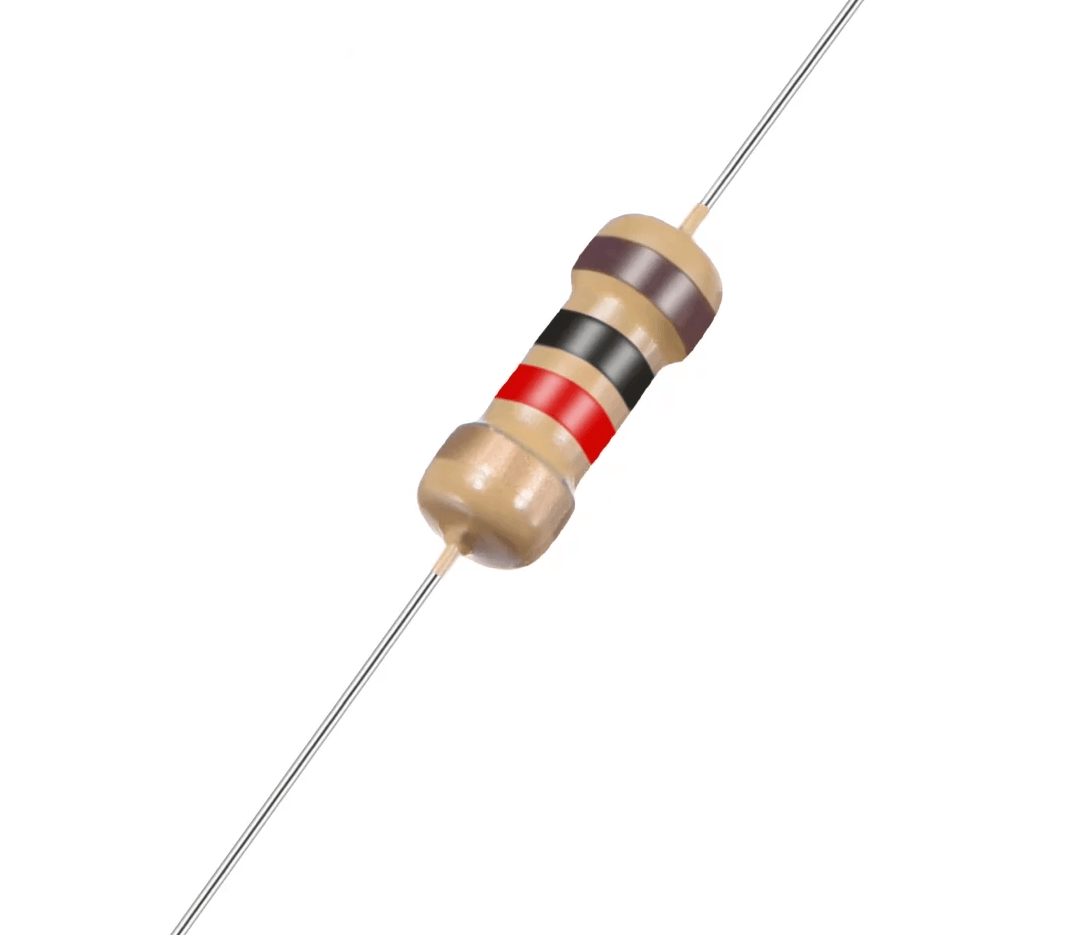
Figure 4: Carbon Film Resistor
Metal Film Resistors offer better precision and lower noise. They are more stable and are great for circuits that need accurate signals and minimal interference. These are used in devices like measuring instruments or audio equipment, where even small changes in resistance can affect performance.

Figure 5: Metal Film Resistor
Wirewound Resistors are built to handle high power and are very precise. They are durable and can take on larger electrical loads that makes them useful in things like power supplies or motor controls, where both efficiency and reliability are expected.

Figure 6: Wirewound Resistor
Surface Mount (SMD) Resistors are small and made for automated production. These resistors are use in smartphones and computers, where space is limited. Even though they're tiny, they still perform reliably and are perfect for compact circuit boards.

Figure 7: Surface Mount (SMD) Resistor
In short, all these resistors have the same 1k Ohm resistance, but their design and qualities make them better suited for different electronic needs.
Comparison of 4-Color Band and 5-Color Band 1K Ohm Resistors
When comparing 1K ohm resistors with 4-color and 5-color bands, it's important to understand the differences in how they are made. These differences affect not only how the resistance values are shown but also how accurate they are, where they can be used, and their cost. The choice between the two depends mainly on the level of accuracy and tolerance required, based on the color code system and the specific use case.
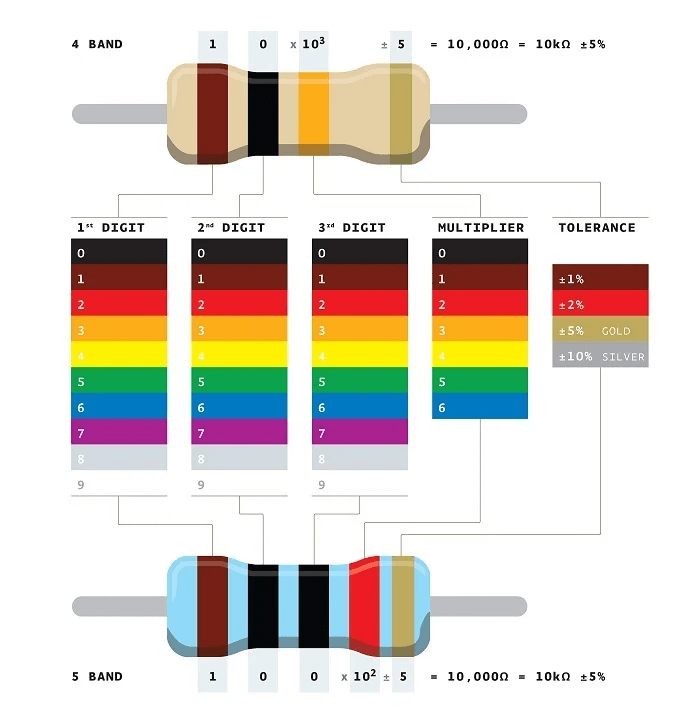
Figure 8: 4-Color Band and 5-Color Band Color Code
Precision and Accuracy
With a tolerance of ±5%, 4-color band resistors can range from 950 to 1050 ohms. This level of variation is acceptable in cases where exact accuracy isn't required, such as in simple electronics or power control in regular devices. Small shifts in resistance won't have a big impact on how they work, so 4-color resistors are a useful and affordable choice for many everyday purposes.
In contrast, 5-color band resistors offer a much tighter tolerance, usually ±1% or ±2%. This means that for a 1K ohm resistor, the value would only vary between 990 and 1010 ohms (with 1% tolerance) or between 980 and 1020 ohms (with 2% tolerance). This greater accuracy is good in areas like medical technology, scientific tools, and high-quality audio systems, where even small changes in resistance can lead to issues. The tighter tolerance ensures these resistors stay reliable, even in changing conditions.
Suitability for Different Applications
4-color band resistors are great for uses where exact precision isn't important. Their wider tolerance makes them a good choice for affordable products and everyday electronics where small resistance changes won't impact performance. You'll find these resistors in toys, household gadgets, and other budget-friendly devices.
5-color band resistors are used in things like medical devices, precision tools, and high-quality audio equipment, where even a small change in resistance can cause problems. These resistors are reliable and stay accurate even in different conditions, making them the go-to option for long-term precision.
Cost and Performance Trade-offs
When choosing between 4-color and 5-color band resistors, the main consideration is balancing cost and performance. For most general applications, 4-color band resistors provide enough accuracy with a wider tolerance range at a lower price. These are used in large-scale manufacturing where staying within budget is a must.
However, for applications where precision is required, the higher cost of 5-color band resistors is worth it. Fields like medical technology, scientific research, and high-end audio benefit from their superior accuracy and reliability. While they are more expensive, they offer the precision to ensure devices work correctly, making them the best choice when even small errors can have big consequences.
Conclusion
The 1k ohm resistor showed how a simple device can have a big impact on how well electronic circuits work. Its color code system makes it easy to identify and use, and it plays an important role in things like audio systems and protection circuits. Comparing 4-color and 5-color band resistors helps us understand the differences in cost, accuracy and performance required in different technologies. With various types of resistors like Carbon Film, Metal Film, Wirewound, and Surface Mount, this component meets both common and special needs, improving how electronic systems function. This article highlights the 1k ohm resistor's great role and how it adapts to different uses, showing the complexity and variety in modern electronics.
Frequently Asked Questions [FAQ]
1. What does 1K resistor do to 5V?
When you connect a 1K ohm resistor to a 5V supply in a circuit, the resistor limits the current flow through the circuit. According to Ohm's Law, ![]() where I is current, V is voltage, and R is resistance. For a 5V supply and a 1K ohm resistor, the current would be
where I is current, V is voltage, and R is resistance. For a 5V supply and a 1K ohm resistor, the current would be ![]() amperes, or 5 milliamperes. This setup is common in electronics to protect components by reducing the current to a safe level.
amperes, or 5 milliamperes. This setup is common in electronics to protect components by reducing the current to a safe level.
2.Is 1K resistor too much for LED?
A 1K ohm resistor is used with LEDs when connected to a 5V supply. The aim is to prevent too much current from passing through the LED, that can damage it. A 1K ohm resistor with a 5V source allows around 5 milliamperes to flow, suitable for most standard LEDs which require current between 5 to 20 milliamperes. It’s a safe choice for basic LED projects, ensuring the LED operates safely without excessive brightness or heat.
3. Which is better 100 ohm resistor or 1k ohm?
The choice between a 100 ohm and a 1k ohm resistor depends on the specific needs of your circuit:
For higher current applications: A 100 ohm resistor allows more current to flow through it compared to a 1k ohm resistor when used at the same voltage. This is suitable for circuits that require higher power handling.
For limiting current: A 1k ohm resistor is better for applications where you need to restrict the current flow to protect sensitive components like LEDs.
4. What is the difference between 1k and 10k ohm resistors?
The primary difference is the resistance value, which impacts how much they limit the current in a circuit. A 1k ohm resistor allows more current to flow compared to a 10k ohm resistor under the same voltage condition. Specifically, with a 5V supply, a 1k ohm resistor would allow 5 milliamperes to flow, whereas a 10k ohm resistor would only allow 0.5 milliamperes. The 10k ohm resistor is more effective for applications requiring lower current for more sensitive circuit conditions.
5. How do you test a 1k ohm resistor?
To test a 1k ohm resistor:
Disconnect the resistor from power: Ensure it's not connected to any voltage source.
Use a multimeter: Set the multimeter to the resistance measurement mode.
Connect the multimeter probes to the resistor terminals: You should see a reading close to 1k ohm. A big difference suggests the resistor might be faulty.
6. What is the current of 1k ohm?
The current through a 1k ohm resistor depends on the voltage applied across it. For example, with a 5V supply, the current would be 5 milliamperes, calculated by ![]() . The current can vary based on the applied voltage, following the relationship defined by Ohm's Law.
. The current can vary based on the applied voltage, following the relationship defined by Ohm's Law.
About us
ALLELCO LIMITED
Read more
Quick inquiry
Please send an inquiry, we will respond immediately.

470 Ohm Resistor
on September 10th

In-Depth Analysis of Shunt Voltage Regulators in Modern Electronics
on September 9th
Popular Posts
-

What is GND in the circuit?
on January 1th 3254
-

RJ-45 Connector Guide: RJ-45 Connector Color Codes, Wiring Schemes, R-J45 Applications, RJ-45 Datasheets
on January 1th 2801
-

Understanding Power Supply Voltages in Electronics VCC, VDD, VEE, VSS, and GND
on November 19th 2606
-

Fiber Connector Types: SC Vs LC And LC Vs MTP
on January 1th 2249
-

Comparison Between DB9 and RS232
on January 1th 1867
-

What Is An LR44 Battery?
Electricity, that ubiquitous force, quietly permeates every aspect of our daily lives, from trivial gadgets to life-threatening medical equipment, it plays a silent role. However, truly grasping this energy, especially how to store and efficiently output it, is no easy task. It is against this background that this article will focus on a type of coin cell battery that may seem insignificant on the...on January 1th 1836
-

Understanding the Fundamentals:Inductance Resistance, andCapacitance
In the intricate dance of electrical engineering, a trio of fundamental elements takes center stage: inductance, resistance, and capacitance. Each bears unique traits that dictate the dynamic rhythms of electronic circuits. Here, we embark on a journey to decipher the complexities of these components, to uncover their distinct roles and practical uses within the vast electrical orchestra. Inductan...on January 1th 1791
-

What Is RF and Why Do We Use It?
Radio Frequency (RF) technology is a key part of modern wireless communication, enabling data transmission over long distances without physical connections. This article delves into the basics of RF, explaining how electromagnetic radiation (EMR) makes RF communication possible. We will explore the principles of EMR, the creation and control of RF signals, and their wide-ranging uses. The article ...on January 1th 1780
-

CR2430 Battery Comprehensive Guide: Specifications, Applications and Comparison to CR2032 Batteries
What is CR2430 battery ?Benefits of CR2430 BatteriesNormCR2430 Battery ApplicationsCR2430 EquivalentCR2430 VS CR2032Battery CR2430 SizeWhat to look for when buying the CR2430 and equivalentsData Sheet PDFFrequently Asked Questions Batteries are the heart of small electronic devices. Among the many types available, coin cells play a crucial role, commonly found in calculators, remote controls, and ...on January 1th 1775
-

Comprehensive guide to hFE in transistors
Transistors are crucial components in modern electronic devices, enabling signal amplification and control. This article delves into the knowledge surrounding hFE, including how to select a transistor's hFE value, how to find hFE, and the gain of different types of transistors. Through our exploration of hFE, we gain a deeper understanding of how transistors work and their role in electronic circu...on November 19th 1761




